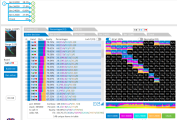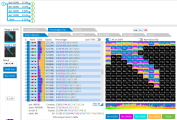I haven't used solvers either, so perhaps I'm not the best to answer your
practical question. But as a matter of
theory - the right way to play against an opponent depends on how
he plays.
Say you're holding QJs, you open, and villain 3-bets. If he only 3-bets with AA, KK, and AK then your optimal strategy is to fold (I'm simplifying here). If instead he 3-bets with any pairs and any broadway then your optimal strategy is to call. So your optimal strategy depends on his range, which is to say, on his strategy. So the answer to the question "are we not able to plug in just our holdings into the solver vs a range and see how we “should” proceed" is
NO, unless you know what his strategy is and can provide it to the solver.
Now, you
can just plug in a single hand and have the solver tell you how you should play,
but that only works because the solver assigns a default strategy to the villain and assumes that the villain is using that strategy, and therefore the solver can tell you what
your optimal play is given your holding and given villain's assumed default strategy.
... and what is that default strategy that the solver assumes the villain is using? Why, it's GTO.
So if your opponent is playing GTO, then the solver will tell you your best play. But if your opponent is NOT playing GTO, then in order to tell you your best play, you'll need to tell the solver what strategy your opponent IS using, and you can do that by specifying the villain's range.
BUT WAIT! That's not enough either, because your opponent's strategy doesn't merely consist of his range, but also of how he will react to
your plays, and that in turn depends on what
he perceives
your strategy is. So to accurately predict how your opponent will play, the solver also needs to know
your range, or, more precisely, what your opponent
thinks your range is. Which is why
@boltonguy wanted to try to construct ranges for Krish and Kenney; GTO solvers are accurate if the players are playing GTO, but less so if they aren't, unless you take the extra steps to specify what their actual strategy is. The players here are so far from GTO that asking what PIO recommends "by default" in this spot isn't especially helpful; it would recommend something that would be much less profitable in this actual situation with these two actual players than it could be.


